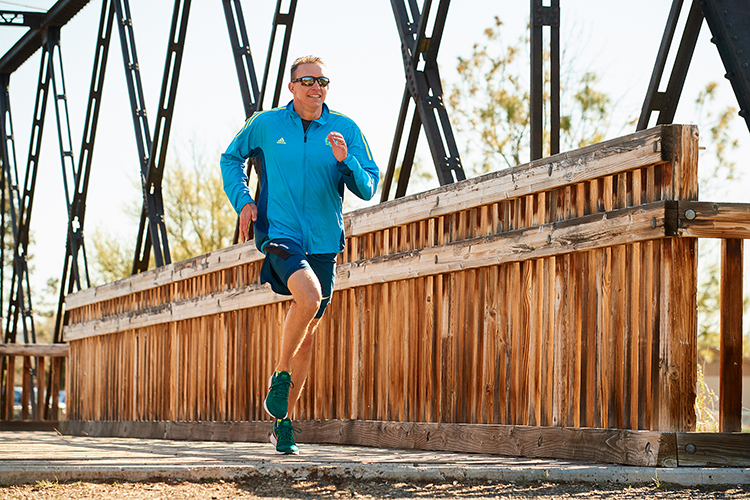
Brandon discovered that he had a talent for running in high school and loved running competitively, but always had a lot of ankle pain due to a joint condition called osteochondritis dissecans. This disorder is caused by a region of poor blood supply that leads to damage of the bone and instability of the overlying cartilage. His ankle would catch and lock and become unstable at times, but then it would calm down and he could resume running. In grad school where he was studying to be a physician assistant (PA), he was playing racquetball and rolled his ankle so bad that he couldn’t walk for two months, let alone run. He had to have a procedure known as microfracture, which involved removing the damaged cartilage and drilling the bone to promote bleeding and inflammation in the hope that the joint would heal. The procedure worked and he remained active with a lot of hiking and biking. Brandon gradually got back into running, but his ankle would ache and continued to catch and cause pain. He tried everything to repair my ankle including stem cell injections, prolotherapy, cortisone injections, and mesenchymal stem cell injections but nothing worked.
Brandon moved to Prineville in 2010 and was running casually, but his ankle still bothered him. He started working as a PA at St. Charles in Prineville where Dr. Moore works as a visiting specialist. He evaluated his ankle and thought that he could repair the unstable cartilage. The procedure would require either taking cartilage from his knee or using an allograft (tissue from a cadaver) and transplanting it into his ankle. The allograft sounded better to Brandon because he had never had problems with his knee and didn’t want knee issues as a possible side effect. The procedure went well, but it took a long time to recover. Dr. Moore said Brandon might not ever run again, but after being active and biking for three years, he was able to get back to it. He entered a few duathlons, which led to running 5k and 10k races. His ankle wasn’t hurting, so he started running faster and longer distances and entering races. After six years, he was able to qualify for and run in the Boston marathon. He says, “I am so grateful for Dr. Moore and The Center for helping me reach my goals and allow me to run competitively again.”





